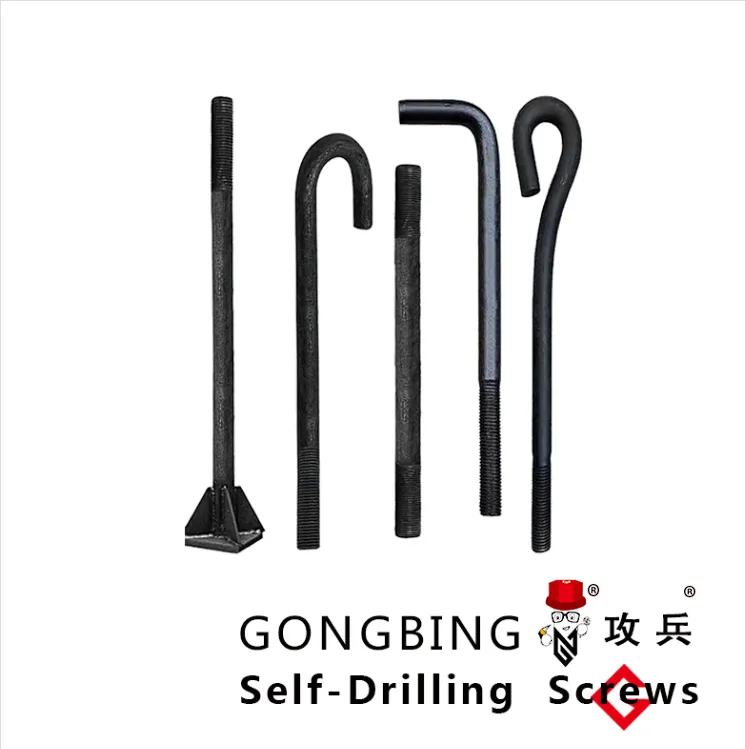Self-Drilling Screw Applications in Renewable Energy Projects
The renewable energy sector is rapidly expanding, driven by global demands for sustainability and efficiency. Within this growth, the importance of reliable fastening solutions cannot be overstated. Self-drilling screws have emerged as critical components in solar, wind, and other renewable energy installations due to their versatility, durability, and ease of use. This article explores how different types of self-drilling screws, including TEKS self-drilling roofing screws and stainless steel self-drilling metal screws, are revolutionizing renewable energy projects.

Types of Self-Drilling Screws
Self-drilling screws are engineered for efficiency, combining drilling and fastening into a single step. Their design eliminates the need for pre-drilling, saving time and labor—a vital advantage in large-scale renewable energy projects. Among the types of self-drilling screws, three primary categories stand out:
Carbon Steel Screws: Ideal for general-purpose applications, these screws offer strength and affordability. They’re commonly used in non-corrosive environments, such as indoor solar panel framing.
TEKS Self-Drilling Roofing Screws: Recognized by their sharp drill points and wide threads, these screws excel in securing metal roofing sheets, a common feature in solar farm installations and wind turbine housings.
Stainless Steel Self-Drilling Metal Screws: Designed for harsh environments, these screws resist corrosion, making them perfect for coastal wind turbines or solar projects exposed to moisture.
Each type is tailored to specific conditions, ensuring optimal performance while reducing installation costs.
TEKS Self-Drilling Roofing Screws
TEKS self-drilling roofing screws are a game-changer for renewable energy infrastructure, particularly in solar and wind projects requiring metal roofing. Their unique design includes a drill-shaped tip that penetrates thick metal sheets without pilot holes, minimizing material stress.
In solar farms, these screws secure mounting rails to corrugated metal roofs, ensuring panels remain stable under extreme weather. Their sealed washers also prevent water ingress, a critical feature for rooftop solar systems. Similarly, wind turbine housings rely on TEKS self-drilling roofing screws to attach protective metal cladding, safeguarding internal components from rain and debris.
The efficiency of these screws translates to faster project completion, a key factor in meeting tight renewable energy deadlines.
Stainless Steel Self-Drilling Metal Screws
Durability is non-negotiable in renewable energy projects, especially those exposed to saltwater, humidity, or temperature fluctuations. Stainless steel self-drilling metal screws address this need with their corrosion-resistant properties, thanks to alloys like 304 or 316 stainless steel.
Offshore wind turbines, for instance, depend on these screws to assemble platforms and access ladders, where salt spray accelerates rusting. In solar projects, stainless steel self-drilling metal screws fasten mounting systems to aluminum frames, ensuring decades of reliable service without degradation.
Their longevity reduces maintenance costs, making them a cost-effective choice despite their higher upfront price.
FAQs About Self-Drilling Screw Applications
What are the advantages of using stainless steel self-drilling metal screws in coastal renewable energy projects?
Stainless steel self-drilling metal screws resist corrosion caused by saltwater and humidity, ensuring structural integrity in coastal environments. Their durability minimizes replacement costs and downtime, making them ideal for offshore wind farms or seaside solar installations.
Why choose TEKS self-drilling roofing screws for solar panel installations?
TEKS self-drilling roofing screws combine rapid installation with weatherproofing. Their sharp tips pierce metal roofs effortlessly, while integrated washers create watertight seals, protecting solar mounting systems from leaks.
How do types of self-drilling screws improve efficiency in renewable energy projects?
By eliminating pre-drilling, types of self-drilling screws reduce labor time and equipment needs. This speeds up installations, allowing developers to meet project timelines and allocate resources elsewhere.
Are stainless steel self-drilling metal screws suitable for high-temperature environments?
Yes. Stainless steel self-drilling metal screws withstand extreme temperatures, making them perfect for solar farms in arid regions or components near heat-generating turbine machinery.
Can TEKS self-drilling roofing screws be reused if disassembled?
While designed for permanent installations, TEKS self-drilling roofing screws can be removed if necessary. However, reusing them may compromise their sealing performance—replacement is recommended for critical applications.
From securing solar panels to assembling wind turbines, self-drilling screws are indispensable in renewable energy. Understanding the strengths of types of self-drilling screws, such as TEKS self-drilling roofing screws and stainless steel self-drilling metal screws, empowers developers to choose the right fasteners for their projects. By prioritizing durability, efficiency, and adaptability, these screws not only streamline installations but also ensure renewable energy systems operate reliably for years to come. Whether battling coastal corrosion or racing against deadlines, the right screw makes all the difference.
-
Weatherproof Plastic Expansion Anchors for OutdoorNovasJun.06,2025
-
Sustainability in the Supply Chain: Eco-Friendly TEK Screws ProductionNovasJun.06,2025
-
Load-Bearing Capacity of External Insulation FixingsNovasJun.06,2025
-
Double Head Bolts: Enhancing Efficiency in Industrial MachineryNovasJun.06,2025
-
Corrosion Resistance in Chipboard Screws: Coatings for Wholesale DurabilityNovasJun.06,2025
-
Butterfly Toggle Bolts : Enhancing Structural ResilienceNovasJun.06,2025
